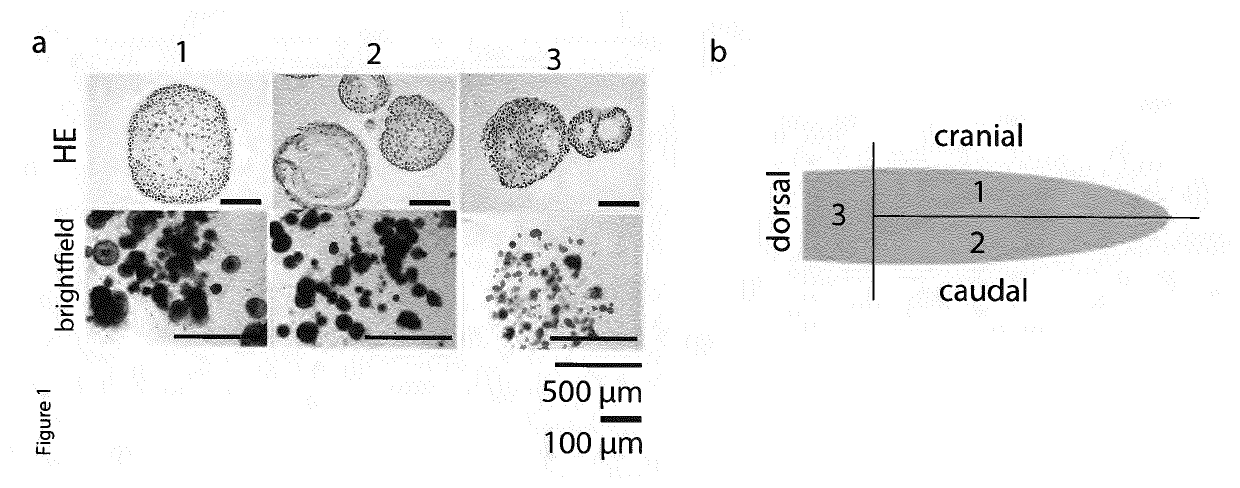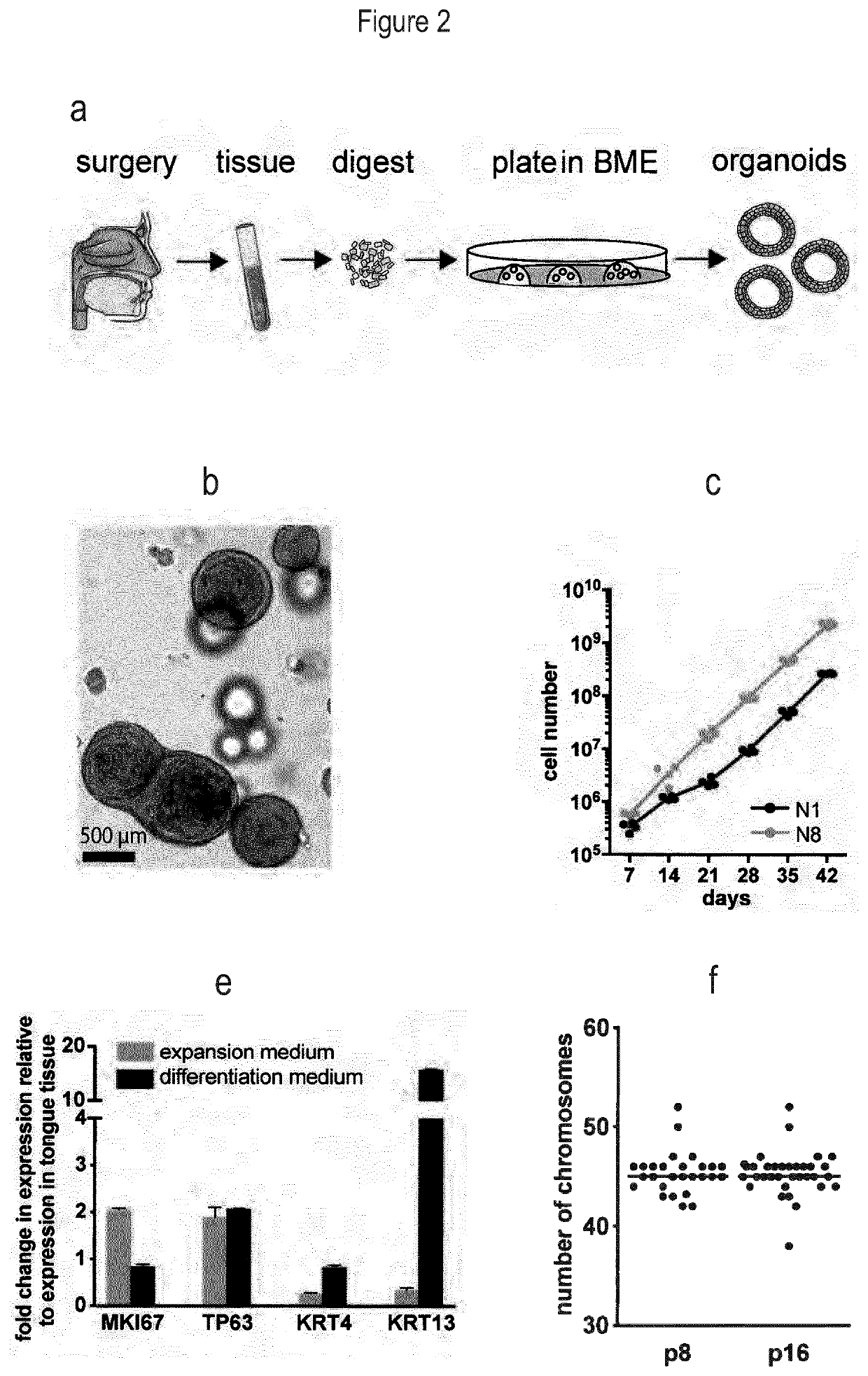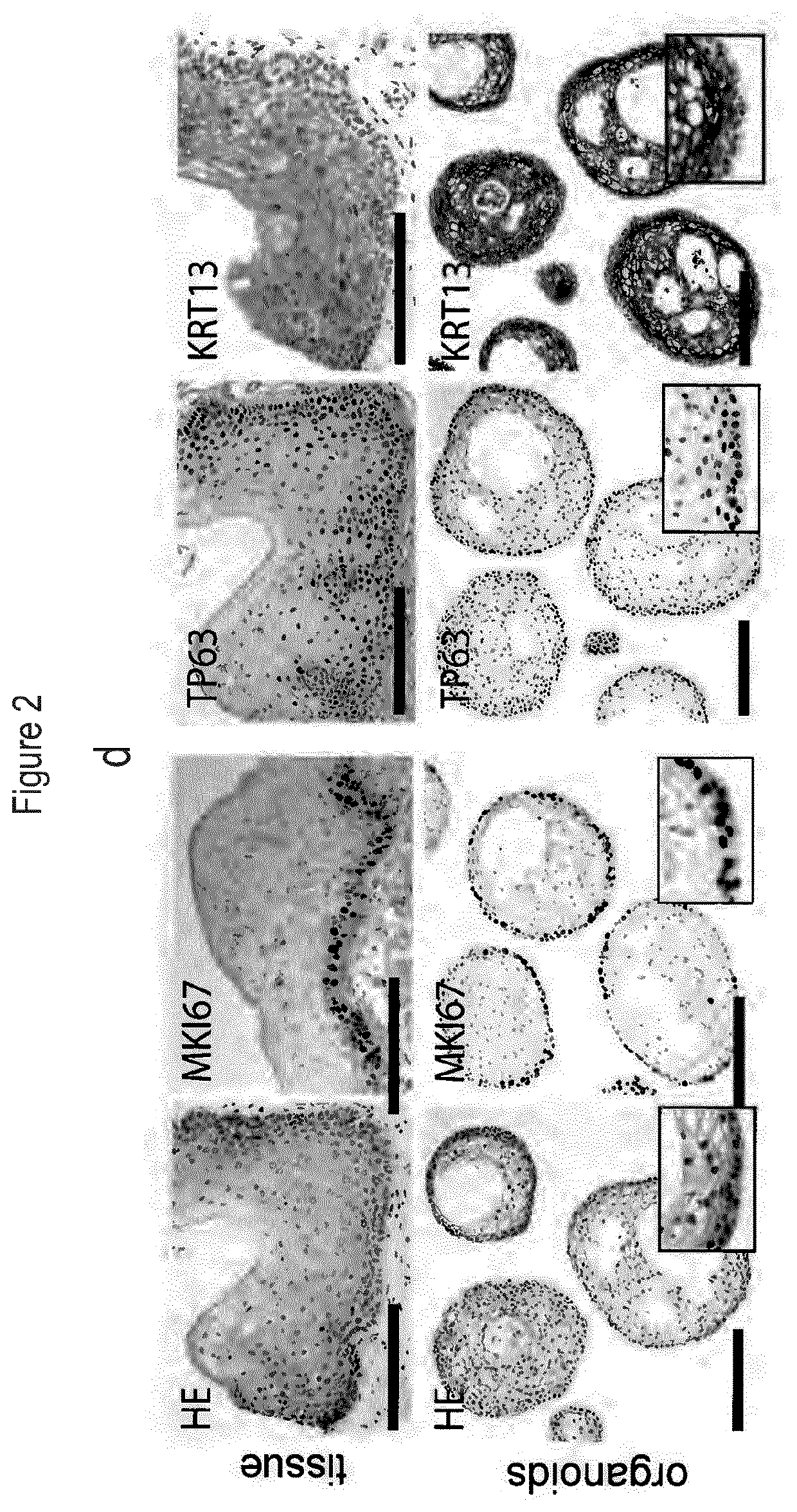Culture Method for Head and Neck Organoids
a culture method technology, applied in the field of in vitro cell culture methods, can solve the problems of limited lifespan, no reliable model to predict the treatment outcome and guide treatment decisions, and difficult treatment of head and neck squamous cell carcinoma (hnsccs)
- Summary
- Abstract
- Description
- Claims
- Application Information
AI Technical Summary
Benefits of technology
Problems solved by technology
Method used
Image
Examples
example 1
can be Derived from Healthy Oral Mucosa and Recapitulate Morphological and Functional Characteristics
[0355]To propagate organoid formation, a range of media compositions was tested as described in previously published protocols for growth support of oral mucosa. Conditions that were successful to grow mouse tongue epithelium (FIG. 1) were refined on human material obtained from surgical resections. A successful culture medium is described in the materials and methods.
[0356]The culture method was tested using an expansion medium comprising a basal medium, the mitogenic growth factors EGF, FGF10 and FGF2, the TGF-beta inhibitor A83-01, the Wnt agonists R-spondin and CHIR-99021, cAMP pathway activator forskolin, the activator of the prostaglandin signalling pathway PGE2, and the BMP inhibitor noggin. The method was also tested using the expansion medium without both CHIR-99021 and FGF2, without either of CHIR-99021 and FGF2, or without FGF2. The method was most successful when all comp...
example 2
sa Organoids can be Productively Infected with Herpes Simplex Virus and Human Papilloma Virus
[0358]The use of this model to study viral infection was explored with Herpes Simplex Virus type 1 (HSV1), a virus known to infect keratinocytes (17) and to give rise to herpes labialis (cold sores). Using fluorescence microscopy, the infection of organoids with tdTomato labelled HSV was followed (22) (FIG. 4A). Using life imaging, spreading of the infection in organoids was observed two days after initial infection (FIG. 4B). After two weeks in culture, infection had spread throughout entire organoids (FIG. 4C). Infection of organoids resulted in an increase in viral DNA, which could be inhibited by the addition of acyclovir (viral TK inhibitor) (FIG. 4D). This experiment was repeated in organoid lines established from two other donors, where an increase in HSV titer was also observed.
[0359]As HPV is known to contribute to oncogenesis of a subset of HNSCC tumors (3,23), HPV16 particles were...
example 3
our Organoids Recapitulate Molecular and Morphological Characteristics of the Original Tumour
[0360]Tumour organoids were successfully established from 23 patients, ranging in age from 48 to 91 (average age at diagnosis: 69). Tumour organoids were established from tumours originating in the oral cavity (floor of mouth, tongue and gingiva / alveolar process), pharynx and larynx (FIG. 5A). Patient clinical data corresponding to established organoid lines can be found in FIG. 19. Of the 23 established tumour organoid lines, 10 were fully characterized molecularly at the date of first submission (data on all others will be added when these become available). These first ten lines are referred to as T1 to T10; the corresponding normal epithelium-derived line of T1 is termed N1 etc. The success rate to establish organoids from tumour tissue was ˜60%. Tumour organoids grew either as dense structures (similar to the normal wildtype epithelial organoids) or as cystic structures (FIGS. 6 and 7)....
PUM
| Property | Measurement | Unit |
|---|---|---|
| concentration | aaaaa | aaaaa |
| concentration | aaaaa | aaaaa |
| concentration | aaaaa | aaaaa |
Abstract
Description
Claims
Application Information
 Login to View More
Login to View More - R&D
- Intellectual Property
- Life Sciences
- Materials
- Tech Scout
- Unparalleled Data Quality
- Higher Quality Content
- 60% Fewer Hallucinations
Browse by: Latest US Patents, China's latest patents, Technical Efficacy Thesaurus, Application Domain, Technology Topic, Popular Technical Reports.
© 2025 PatSnap. All rights reserved.Legal|Privacy policy|Modern Slavery Act Transparency Statement|Sitemap|About US| Contact US: help@patsnap.com



